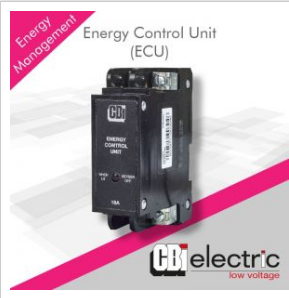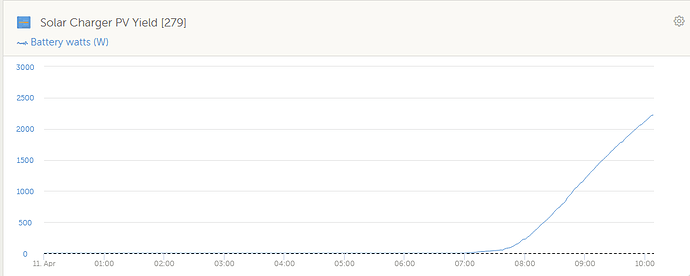This is a question that I haven’t got answered satisfactorily.
The load that a RE system can drive needs to be managed so as not to overload the inverter. Often this is done by scheduling loads to only come on sequentially. This isn’t what I’m referring to.
I want to know if anyone is managing their loads dynamically with a control system and how that system operates.
I use Home Assistant and Node Red to manage a bunch of Sonoff Switches (Tasmota flashed) to turn loads on and off depending on Inverter Load & Battery SOC.
I use NodeRED on Home Assistant to keep the inverter watts in line with the panel watts. We check the battery wants coming in/being drawn to increase/lower the inverters max wattage dynamically when grid-tied.
When Eskom is off:
The Critical Loads DB, the main breaker on that DB will trip before the inverter says “protect me from yourself”.
The ratings on the plugs in that DB are also geared towards like “Don’t plug the damn dryer/heater into the critical load’s circuit!!!” … the breaker will trip. MW and kettle will work, and if both are on at the same time during LS, the main breaker sorts that faux pas out.
Yes, I know that is not “dynamically managed”, but damn, it is near foolproof. ![]()
How are you measuring the panel power?
If the battery is discharged, then lower the inverter watts.
If the battery is being charged, increase the inverter watts.
Calc is done every 30 seconds.
Comes in very handy on bad weather days as it does not keep on draining the battery with what little comes in.
On good days it runs normally.
So you control a setpoint (0-100%) which ramps up if the battery is being charged or down if not?
If so do you then switch in loads based on the value of the setpoint (since you don’t have a variable load)?
So to be more specific in this thread Who is PowerOptimal? Solar water heating discussion we discussed the possibility of measuring PV power with a stand alone PV panel with a fixed load so its voltage represents the solar power available.
Is there anyone using this control method?
The Pareto principle, also known as the 80:20 rule.
In practical terms, it means it costs 80% to squeeze out the last 20% of the available 100%
Sometimes “KISS” solutions are better. Rather than absolute optimum solutions, I rather get 80% there as cheaply and simply as possible and buy another panel or two.
And I reckon I’d achieve 80% with a simple geyser timer.
That is because I have a fair idea of what time the sun shines without a gizmo that takes 2-4 years to pay off.
Ok. Let’s check out a real world situation…
This question was posted on another forum: I have a Sunsynk inverter plus 8 panels with batteries. I have 3 geysers. (A bit light on details I agree but not to worry…)
Assume he has a Sunsynk 5kw hybrid inverter.
How would one configure this system?
You get external devices that you clamp onto your incoming power line (the usual CT clamp) that detects back-flow and feeds the excess into a hot water cylinder aka geyser. Some of these systems can do PWM or switch dimmer-type control. For an example, see the energy diverter projects within the larger OpenEnergy project.
Man, seems like someone is considering the goslr offer that you asked about previously…
With 3 geysers on 8 panels he won’t get far as 8 panels will hardly give enough power to heat 3 geysers that is used frequently. Then he will still need power for his day use as well as for charging his “Hubble” battery…
I would put timers on the Geysers and drop the elements to 2kw and try and get the most from the panels, but this system is a bit small for what this guy wants to do… Imo…
Nope, as Phil said, I aim for the 80%.
Just don’t want to use the batteries for the 80% saving on bad weather days.
Indeed!
Maybe I didn’t explain well enough: The question of managing the loads is specifically the loads being driven by solar. The idea is to use PV power to meet your needs rather than grid or your batteries.
With scheduling loads on a timer means that your system might be idling (assuming no storage) waiting for the time slot to power the next load. Not very efficient ![]()
Sonof switches.
The Pareto principle is the alternative.
My personal opinion … it is a rabbit hole, as you deal with one scenario, the next one pops up, so you deal with that … down the rabbit hole, you go. I know, as I tried a few things the last few years.
I also know of some pretty amazing systems put together by members here. It gets very technical, so much so that the wife will never be able to sort it in one absence, even with a 100-page manual. ![]()
My conclusion: Don’t fret the small stuff. Balance the panels with the loads, sit back and relax, because no 2 weeks is the same ito weather.
I use a couple of CBI Astute switches (30A resistive can’t be beat) quite successfully. Was meaning to go HomeAssistant, but I’m already at that 80%. HA will add finer control but for now it’s fine.
I’m using the Tuya app but this all works in the CBI app itself too.
I’m running the pool pump from 09:00-12:00 on a timed scene. Then from 12:00 I run the first geyser until it is hot, then the second until it’s hot, then start the pool again until 19:00.
That “until it is hot” works like this: When a geyser switch is on, but it isn’t using any current, that means the thermostat has turned off, i.e. the geyser is done. So I have an automation setup that, when the geyser current drops to zero while the geyser is on, I switch it off.
There’s a bit of turning scenes on & off and making sure a current threshold is reached which I think could be simpler in node-red and HA, but I could do this without setting anything else up.
A good philosophy! I’m a control man (industrial automation) so this stuff keeps me awake day & night.
The complexity of these systems is not only the PV power being erratic (if cloudy) but the domestic load is even more erratic. The kettle, washing machine, tumble drier, welder etc. could all be on or off so the load is hectic.
PS: I chickened out of this conundrum before I started and opted for a dedicated PV hot water system.
These can be used to sequence loads:

Jip, for example, my production yesterday with the SOC the entire day on 100%. Powering the house including heating 2 geysers sequentially … spot where that happens.
To control house loads, I have totally given up. I can only control the geysers … kinda.
And when there is bad weather, geysers still go on cause debating with the wife ito showering with cold water, naaa, still got those scars.
Versus today’s production so far, the SOC bottomed at 76% before the panels took over:
Indeed. This is something we can easily forget. For example, the way the backup water system works in this house. You have to turn this one off first, then THAT one on second, THEN start the pump over there… I have to document that, because I do travel at times and the wife has to manage on her own.
Use NabuCassa to access your HA remotely, that way you can add everything to HA, and manage it yourself.

